Spring brings about a notable change in the energy landscape as demand for electricity decreases and solar power production surges, with the oversupply resulting in softer prices.
Prices were flat and under $50/MWh in all states besides NSW.
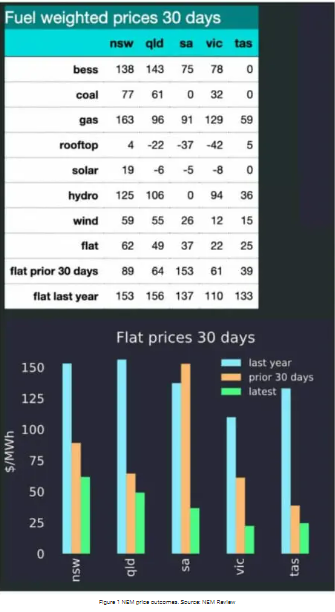
Low Prices in Victoria
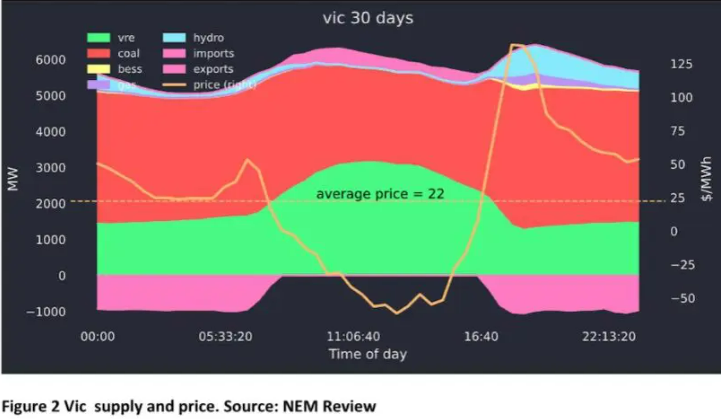
Over the past 30 days, electricity prices in Victoria dipped to a low of $22 per megawatt-hour (MWh). Drilling further into the data, weighted solar prices are primarily negative, while battery-stored power undercuts gas-fired generation.
The current situation shows that battery storage is becoming a valuable source of instantly dispatchable energy that is faster and cheaper than gas.
The widespread adoption of renewable energy sources can significantly drive down electricity prices.
But the core challenge the country now faces is to expedite the construction of renewable energy capacity and, more importantly, the transmission infrastructure to bring these benefits to reality.
Winter demand and the need for wind power
While the spring season showcases the positive influence of solar power, Winter tells a different story. As the colder months arrive, electricity demand increases and solar production diminishes due to reduced sunlight hours.
To meet this heightened demand, we must emphasise wind power generation and the necessary transmission infrastructure to get it from the wind farms into the grid and to its final destination.
Navigating the Daily Price Patterns
If we examine daily price patterns, we can make some notable observations, as exemplified in some states.
Battery storage systems are becoming increasingly visible on the supply graphs.
However, a significant issue arises in Victoria, which turns into a net importer of electricity during the middle of the day, even when prices go negative.
The root cause lies in the insufficient transmission capacity connecting Victoria to New South Wales.
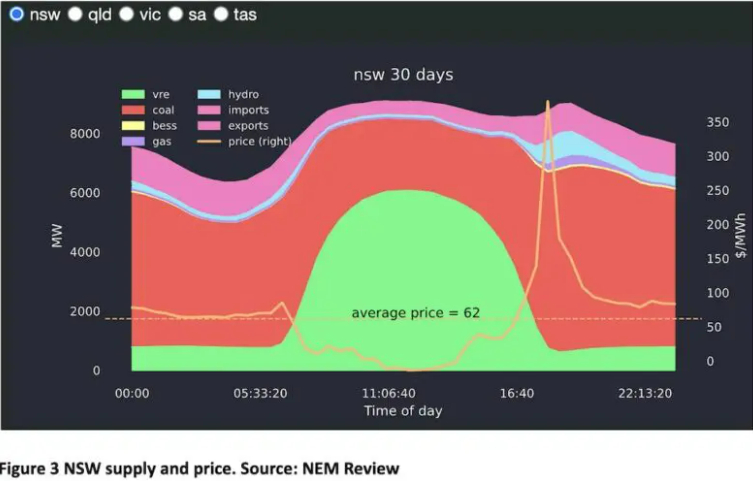
In New South Wales, interstate exports to Victoria occur during the middle of the day, precisely when South Australia intends to export to Victoria.
This alignment may hold promise for 2027 when Yallourn Power Station is slated for closure.
However, for now, this situation is putting pressure on Victorian generators.
Exploring Energy Futures
Three-year ahead futures are noticeably less volatile than their two-year counterparts. The market anticipates prices to remain relatively stable three years from now, mirroring the current spot prices.
Secondly, futures prices correlate with spot prices, albeit with a softer variation. Generally, futures prices exhibit a slight lag behind spot prices, with two-year futures closely tracking the current spot prices more than three-year futures.
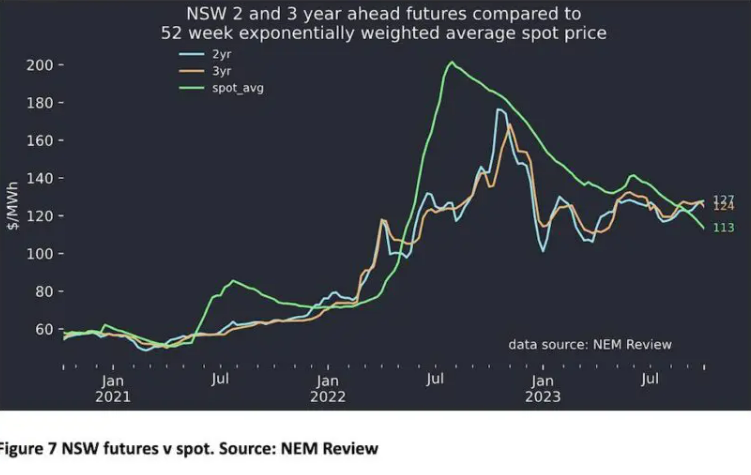
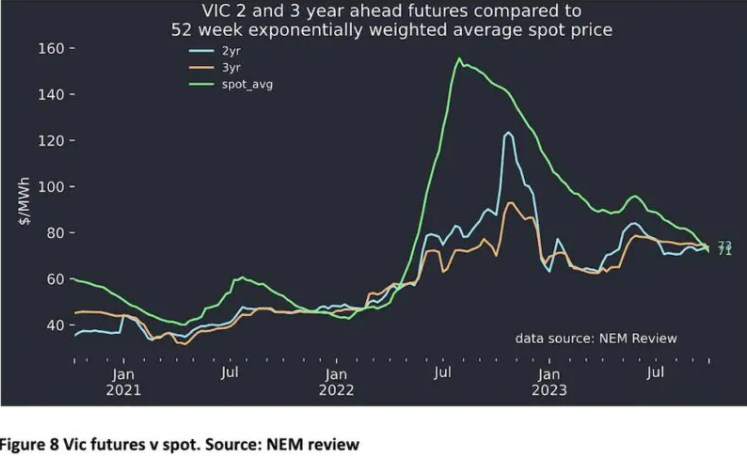
The Path Ahead
It’s evident that renewables, such as wind and solar power, have the potential to reshape our energy markets by driving down prices during periods of high renewable generation.
Yet the journey toward a more sustainable and cost-effective energy system is still ongoing. We must address transmission limitations, encourage the rapid growth of renewable capacity, and keep an eye on the evolving energy futures market.
These elements are integral to achieving a cleaner, more affordable energy future.
Take Control of Your Energy Future Today
With this in mind, recognising the transformative potential of renewable energy and the current market trends, this could be the opportune moment to proactively engage in the energy market.
Get in touch with one of our experienced energy consultants to delve deeper into these insights and explore how your business can leverage the evolving energy landscape.
Whether you seek to discuss potential cost-saving strategies, explore renewable energy adoption, establish a baseline within the current futures market, or streamline your energy procurement process, our team is dedicated to providing tailored solutions that align with your specific energy goals.
Don’t miss out on the chance to secure a competitive edge and pave the way for a sustainable and efficient energy future.
Contact us today at 1300 852 770 or admin@leadingedgeenergy.com.au to initiate a comprehensive discussion and take the first step towards a more resilient energy strategy.
We source, analyse, compare and rank commercial, industrial and multisite energy quotes. Obligation Free.
Chat with one of our experienced consultants today and get the insights your business needs to help manage the risks associated with volatile electricity and natural gas markets. Our energy procurement service is obligation-free and provides a time-saving way of securing lower energy rates from our panel of energy retailers.







